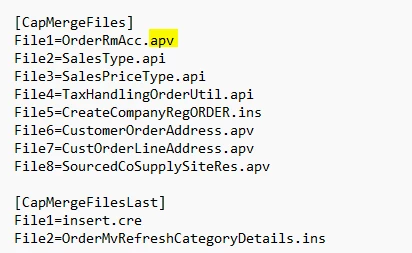In IFS Developer Studio, I’ve got one module with a few entities and a couple utilities in it. The utilities depend on the entities, but when I try to create a topic environment, it’s not deploying in the correct order. The utility’s package fails because it’s created before the dependent entity’s view.
!!!Error deploying database object
!!!PACKAGE C_MY_UTILITY_API created with compilation errors at 28-MAY-25 22:07:16
PLS-00201: identifier 'C_MY_OTHER_ENTITY' must be declared error at line no :12
PL/SQL: Compilation unit analysis terminated error at line no :0
I’ve been trying to play with the deploy.ini file to force the order the files are deployed, but this isn’t working. I’ve tried putting the files under CapMergeFiles and under CapMergeFilesLast, and they don’t seem to be honored.
[CapMergeFiles]
...
File6=CMyOtherEntity.api
File7=CMyOtherEntity.apy
...
[CapMergeFilesLast]
File1=CMyUtility.api
File2=CMyUtility.apy
...
What do you think I’m doing wrong? (Is this an issue with 24.2.0?) How can I force an entity inside a module to get deployed before the utilities inside that same module that depend on it?











